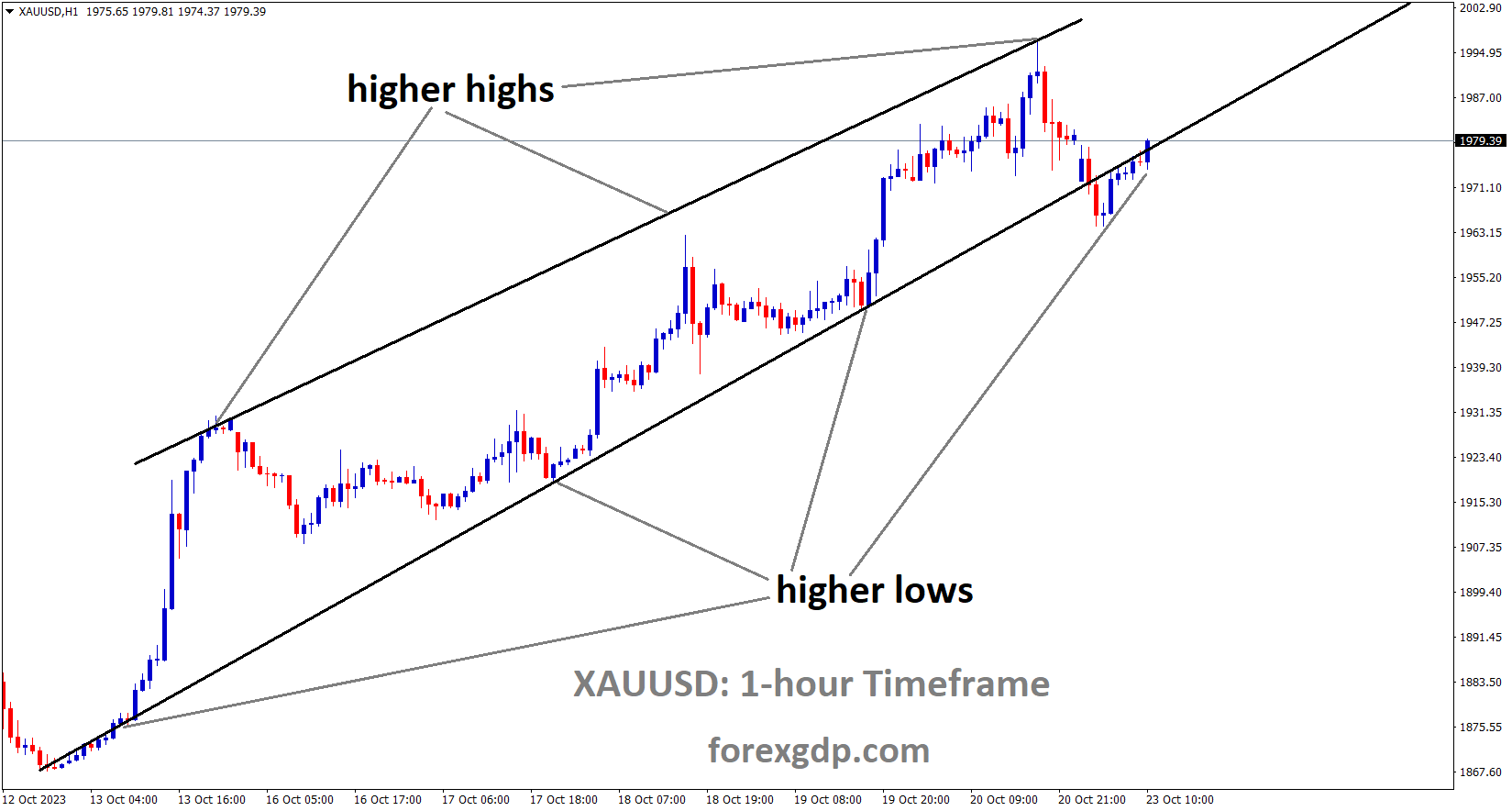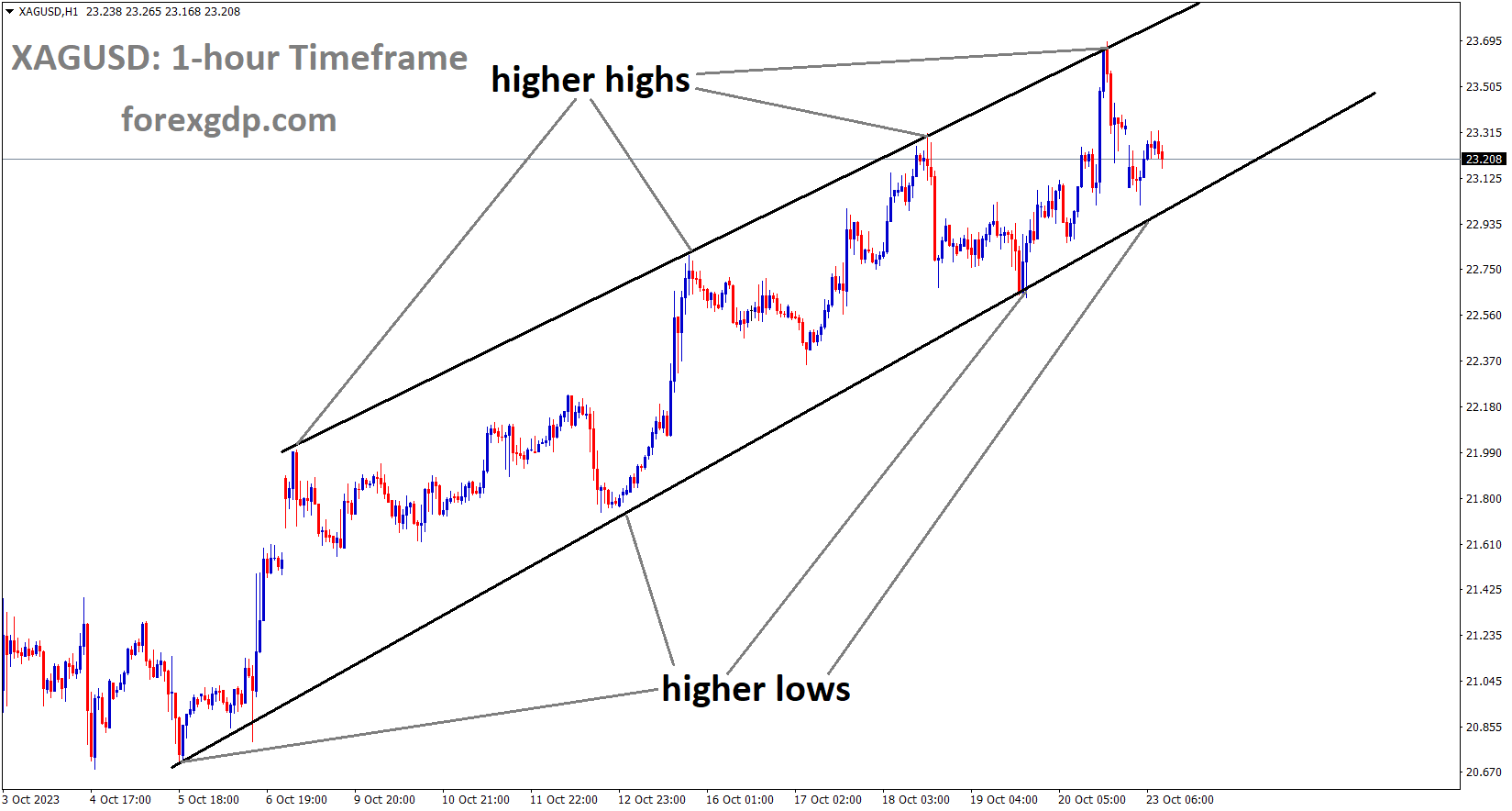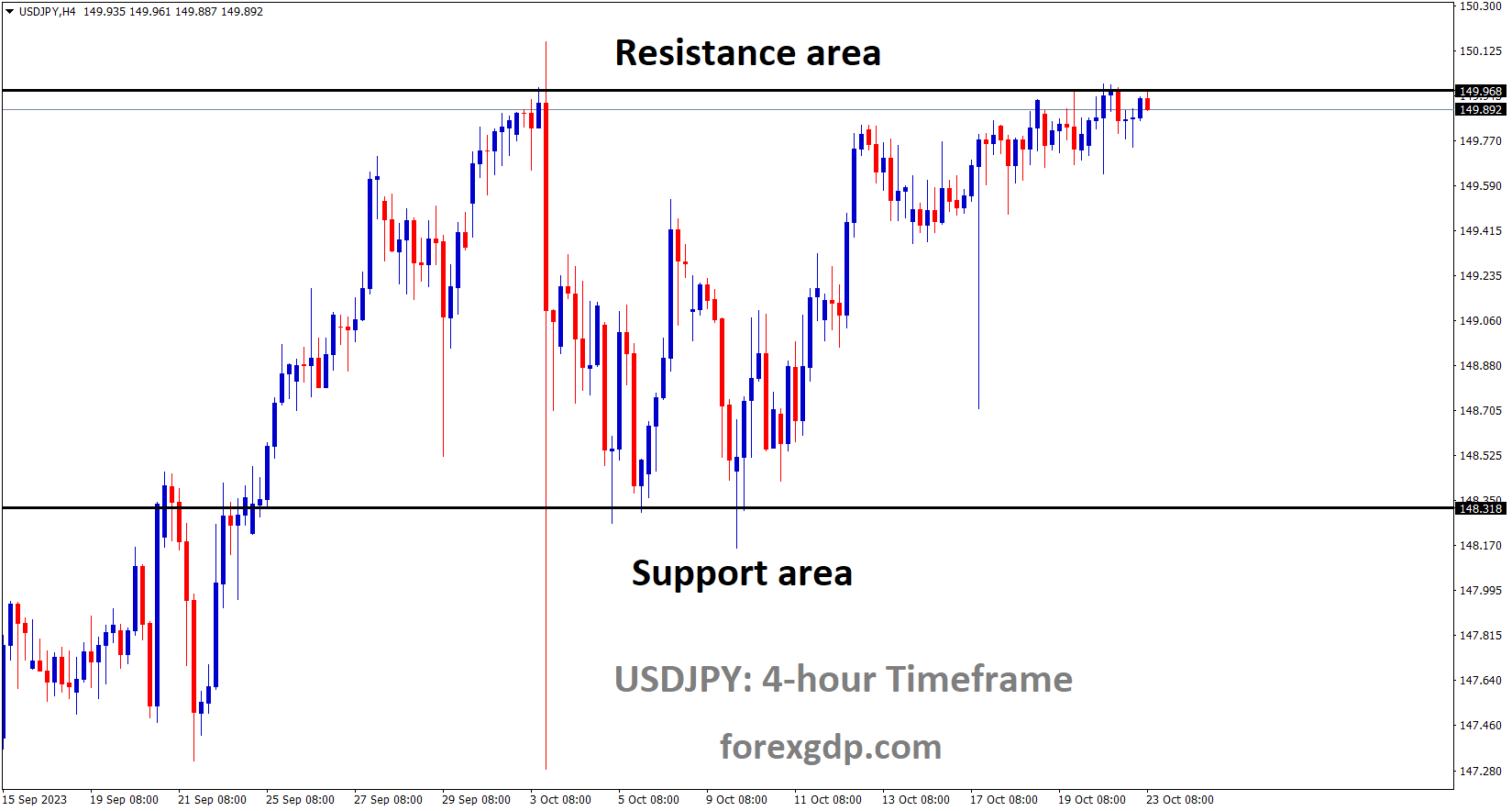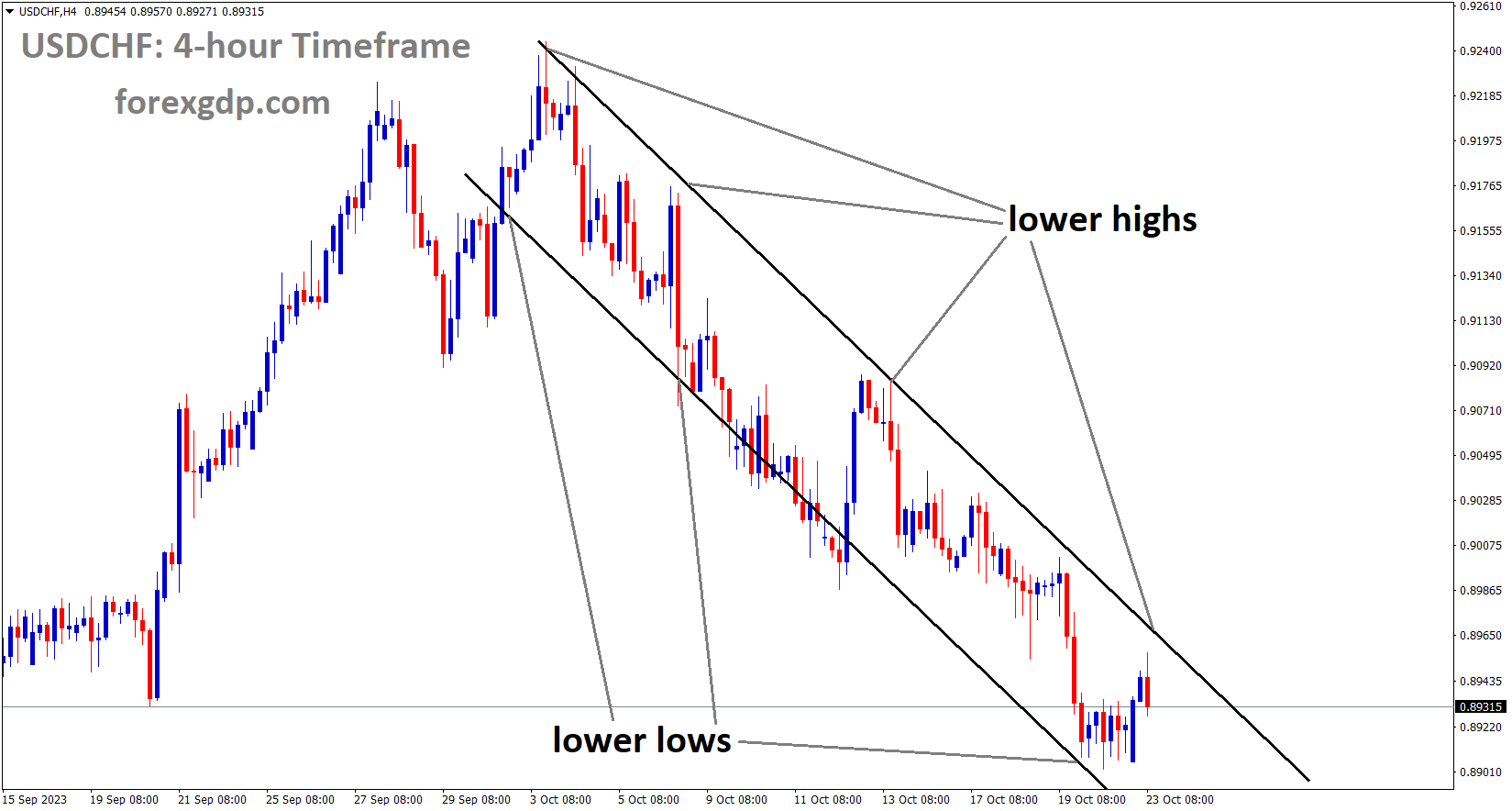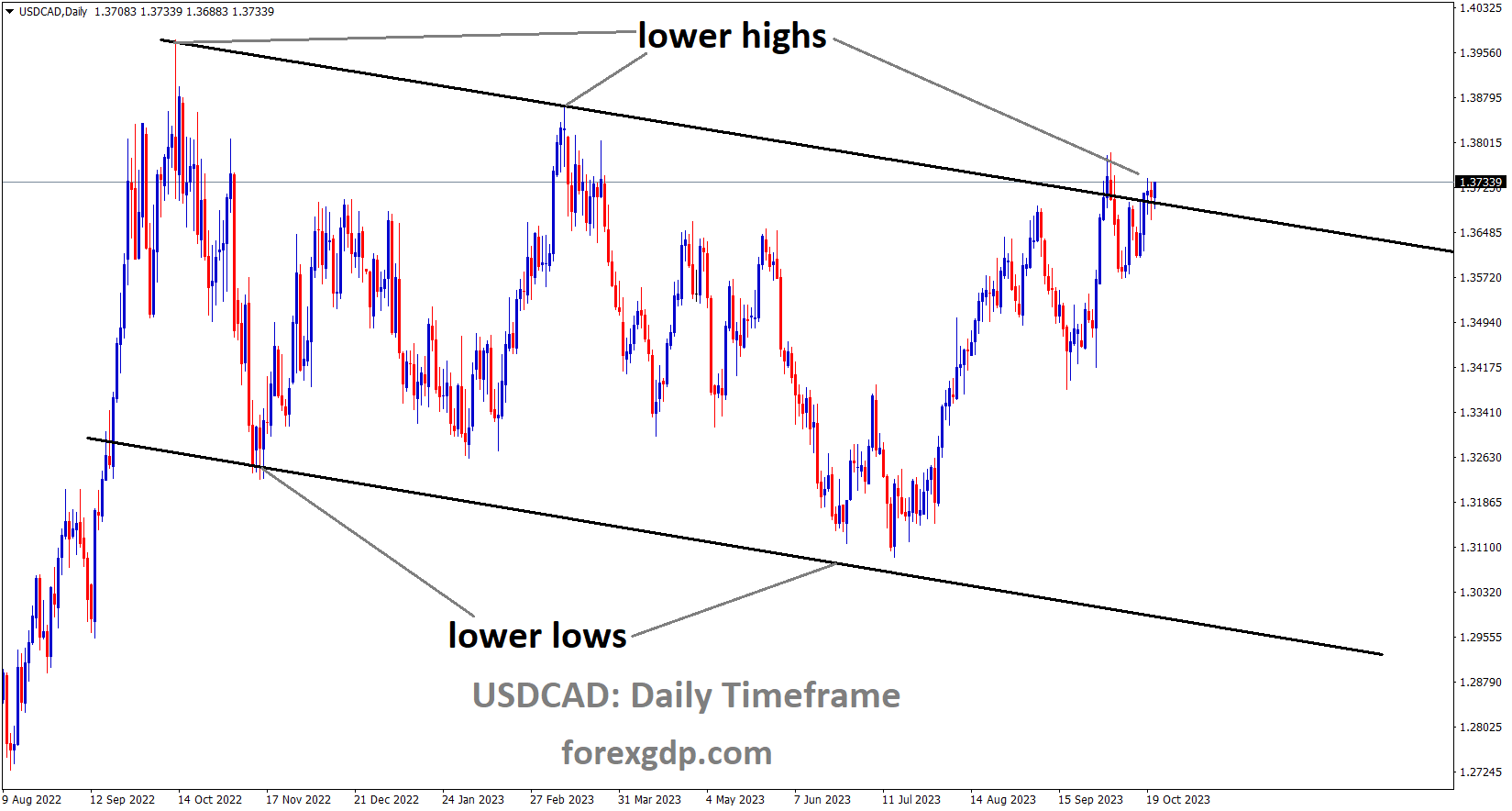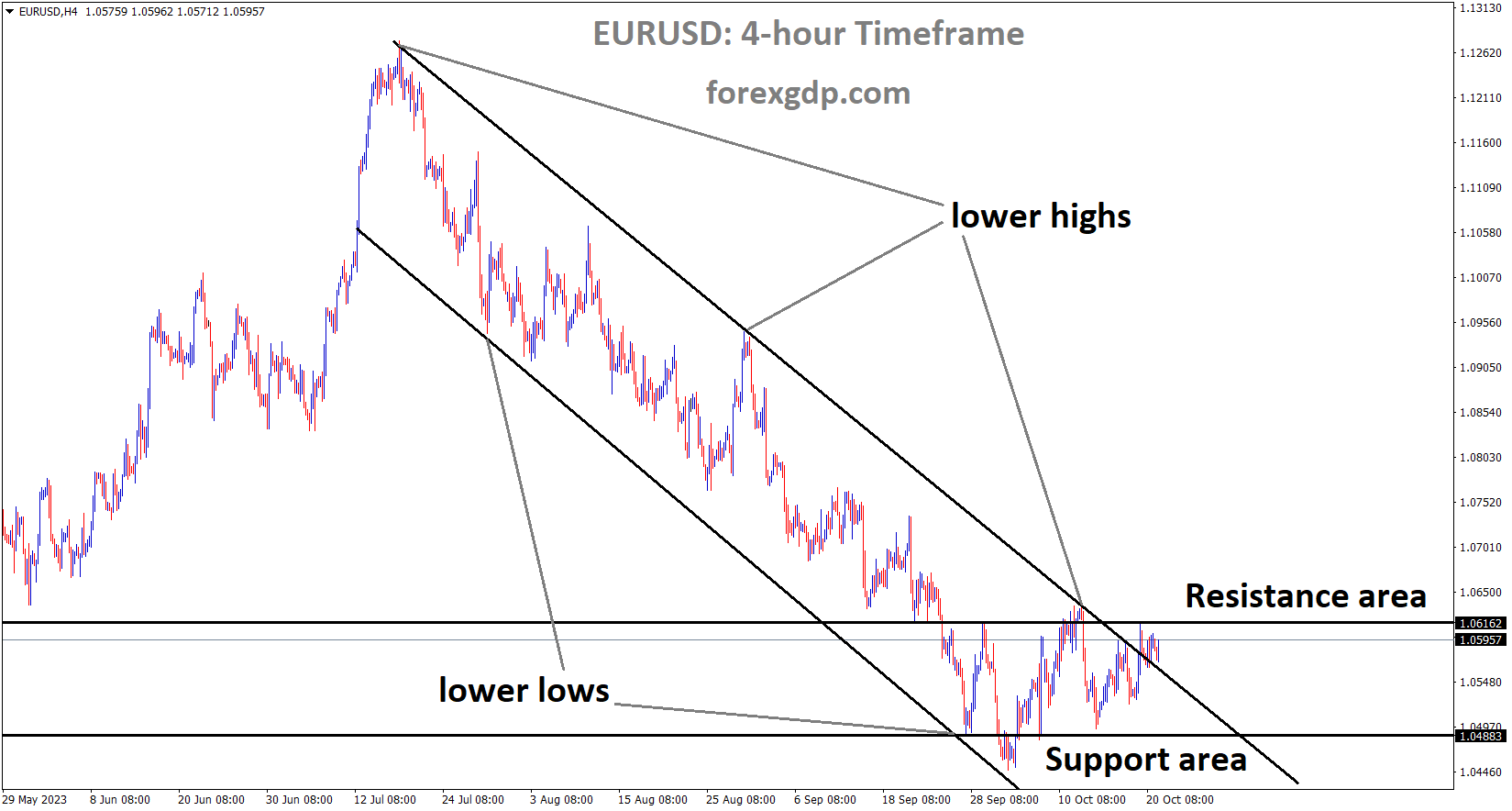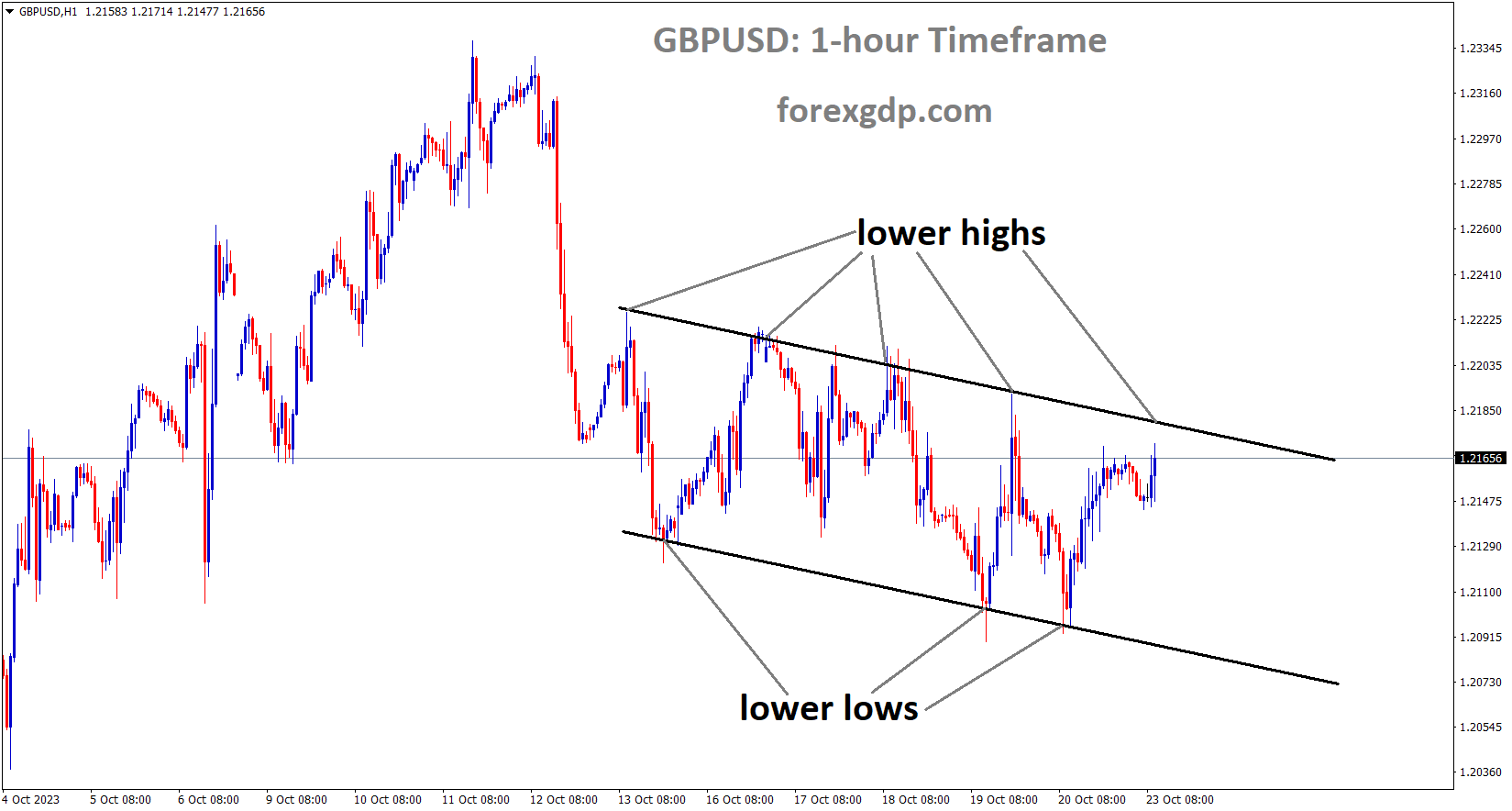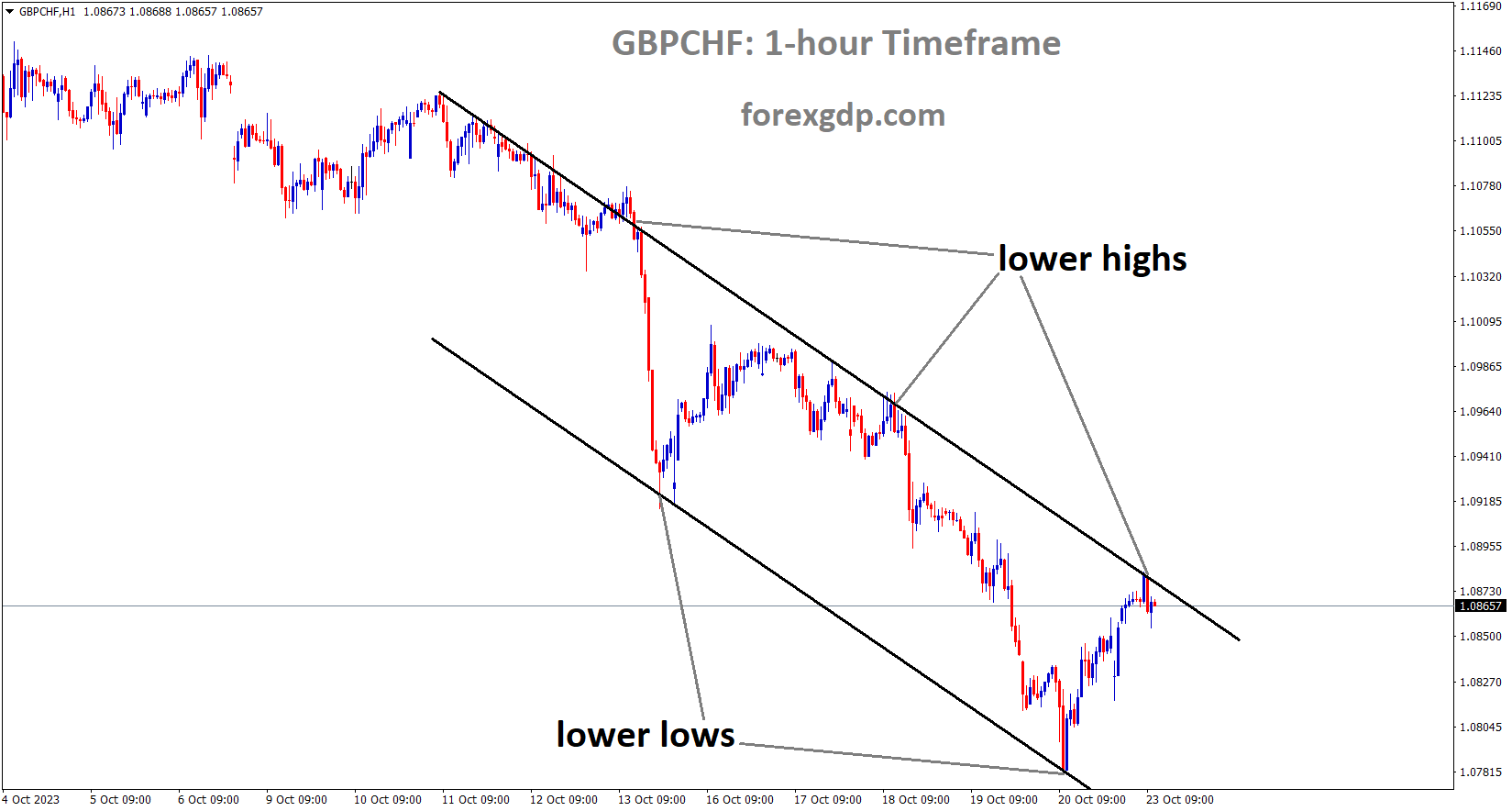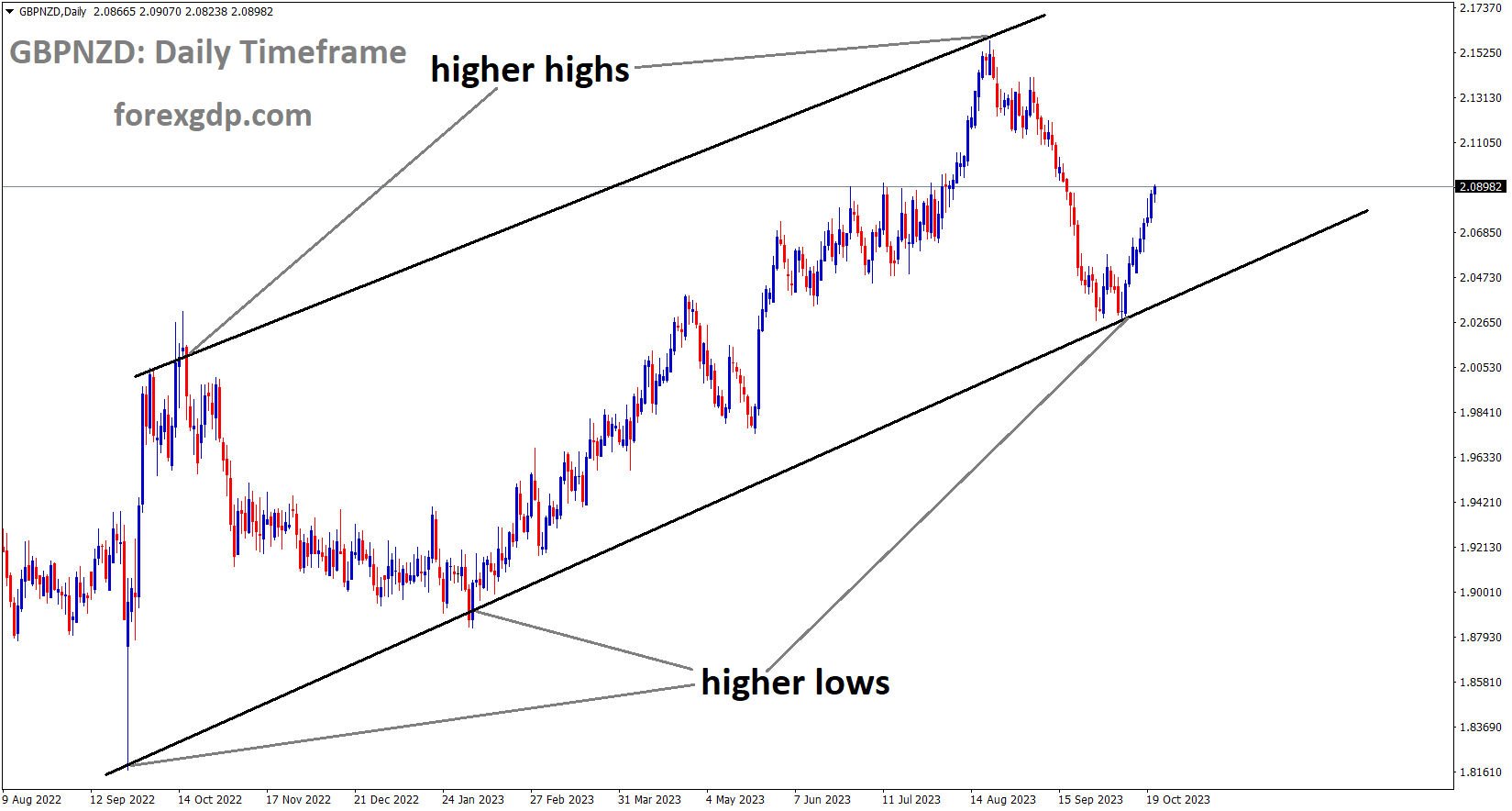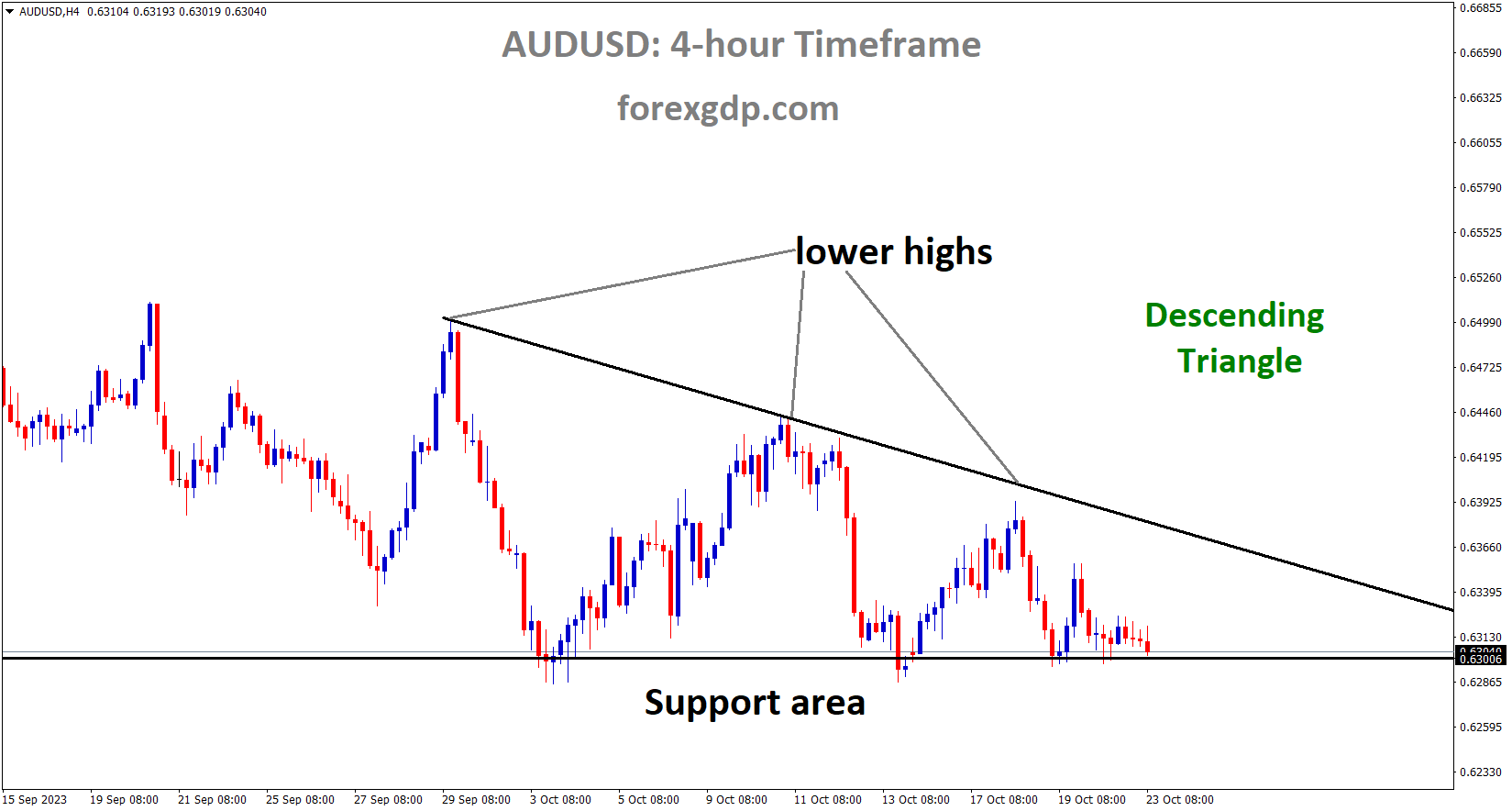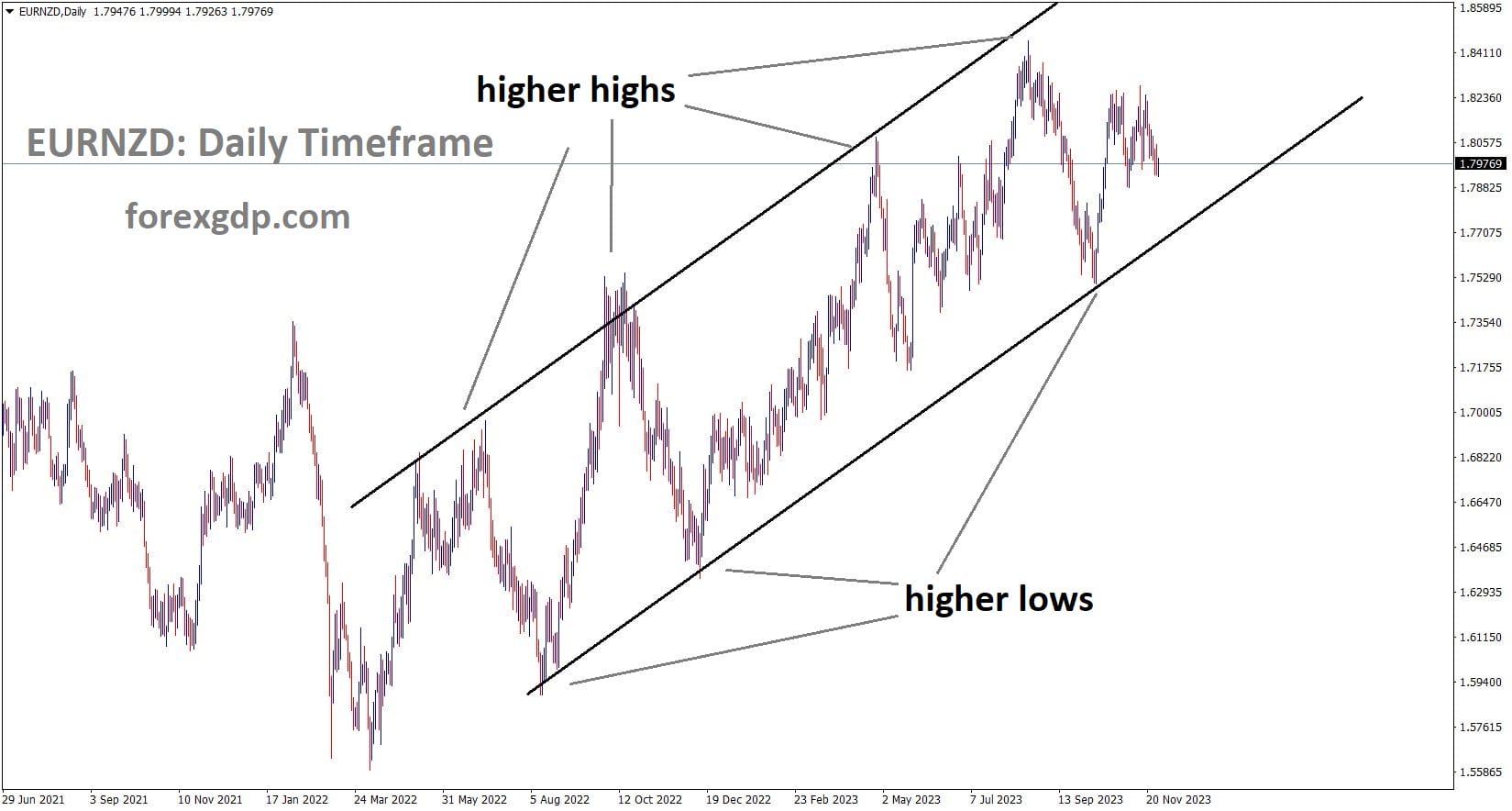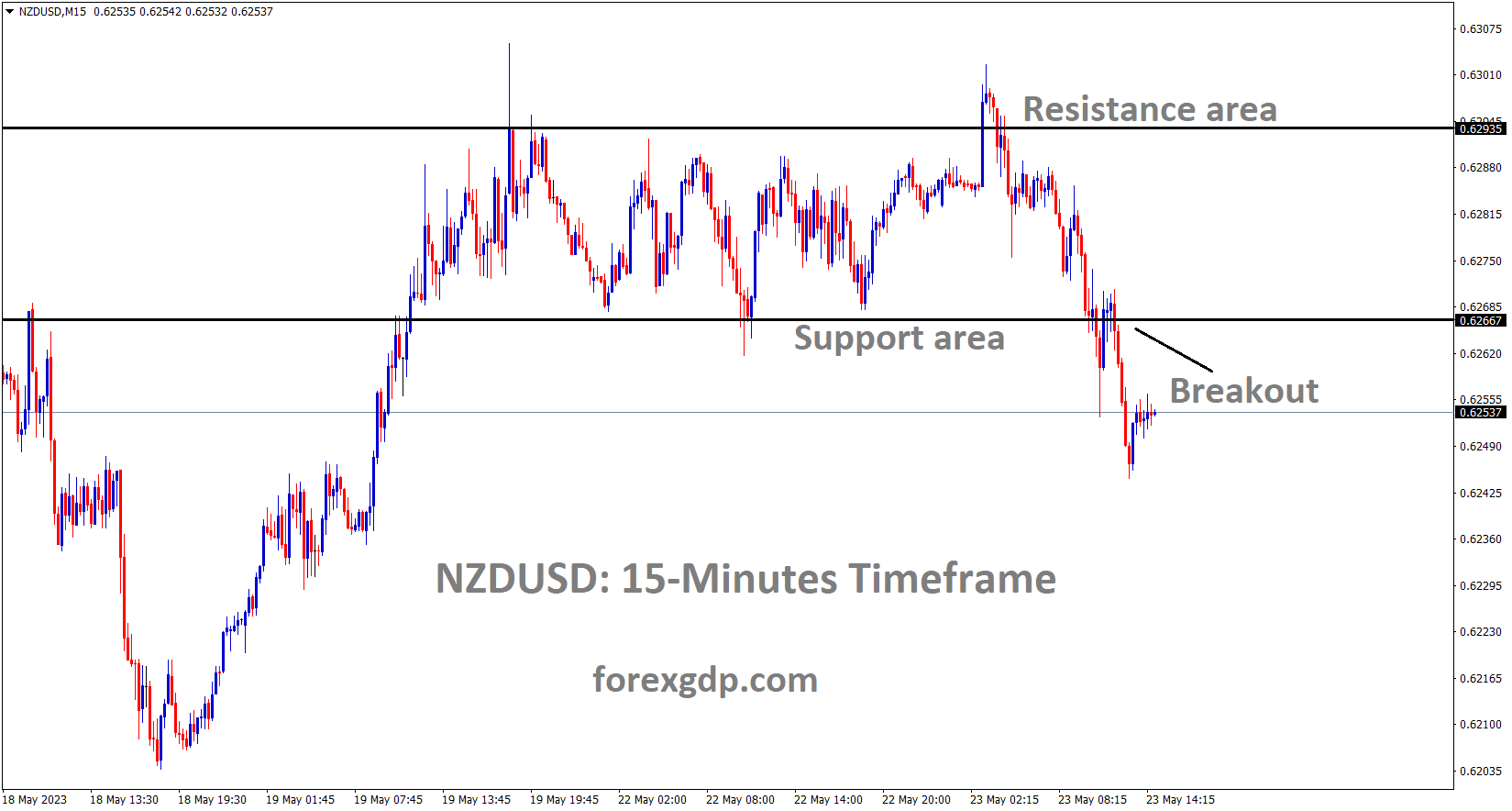Gold Analysis:
XAUUSD Gold price is moving in an Ascending channel and the market has rebounded from the higher low area of the channel.
Tensions persist in the Middle East, with mounting concerns of injuries and the potential for further escalation of conflict. Gold prices have surged at an accelerated rate, reflecting the underlying anxieties surrounding the situation.
The week began with a slight easing in gold prices, despite recent substantial gains driven by increased demand for safe-haven assets, which outweighed the rising yields on government bonds worldwide. The ongoing geopolitical tensions in the Middle East contributed to this trend, as they eroded investor confidence in growth-oriented assets like equities. However, other fundamental macroeconomic factors also played a role in driving the precious metal’s rally.
One notable indicator of the deteriorating outlook for corporate bonds is the iShares iBoxx High Yield Corporate Bond Fund Exchange Traded Fund (ETF). This ETF’s performance has declined to levels reminiscent of the aftermath of the Silicon Valley Bank collapse. The tightening of credit conditions had a domino effect, negatively impacting Wall Street equity indices and increasing risks for various assets, which, in turn, may have boosted demand for gold.

Regrettably, the Middle East’s geopolitical situation shows no signs of a peaceful resolution in the near future, which could sustain the bullish sentiment for gold, despite the rise in Treasury yields.
Last Thursday, the 2-year Treasury note, sensitive to monetary policy changes, traded at 5.25% for the first time since 2006 before retreating to around 5.10% by the end of the week. Similarly, the benchmark 10-year note reached its highest level since 2007, briefly exceeding 5.0%, before settling around 4.95%.
And we can observe that despite these elevated 10-year Treasury yields and the strength of the DXY USD index, gold prices have not yet been significantly impacted. However, it is worth monitoring these markets closely in case of abrupt movements.
The sell-off in the iShares high-yield ETF may have broader implications for equities, as it makes debt financing more expensive for companies. This could add further complexity to the financial landscape and influence gold’s performance in the coming weeks.
Silver Analysis:
XAGUSD Silver price is moving in an Ascending channel and the market has reached the higher low area of the channel
The US Dollar is currently in a period of consolidation as market participants await the release of Q3 GDP data scheduled for later this week. Notably, the yield on the US 10-year Treasury has reached the 5.0% mark, driven by recent messages from Federal Reserve officials indicating the likelihood of higher interest rates being maintained for extended periods.
Among the commonly monitored benchmarks, the US 10-year yield recently reached the significant psychological threshold of 5%, a development attributed to prominent Federal Reserve Bank officials consistently aligning with the prevailing policy stance of maintaining higher rates for an extended period.
Historically, yields have had a notable impact on the strength of the US Dollar. The absence of a sustained continuation of the previous uptrend in yields implies that the dollar might be approaching a peak. Unless a substantial catalyst emerges to reignite upward momentum, such as the forthcoming US Q3 GDP data release on Thursday, the dollar’s trajectory may remain uncertain.
USDJPY Analysis:
USDJPY is moving in the Box pattern and the market has reached the resistance area of the pattern
According to a report from Nikkei News this morning, the Bank of Japan is considering adjustments to its Yield Curve Control (YCC) level. This development comes as the 10-Year Japanese Government Bond (JGB) Yield surpassed the 0.86% mark, and the USDJPY exchange rate reached a 33-year high at 150.00.
The 10-year Japanese Government Bond (JGB) is currently hovering around 0.86%, marking its highest level since 2013. Nikkei News has reported that the Bank of Japan is contemplating adjustments to its yield curve control program (YCC). This development comes on the heels of last week’s speculation that the central bank may consider raising its policy rate, which currently sits below -0.10%. If the USD/JPY currency pair manages to break convincingly above the 150 mark, it could bring the 33-year high of 151.95 into focus. Such a significant move might also prompt intervention from the Bank of Japan in the currency markets. Historically, central bank interventions have been most effective when coupled with supportive fundamental factors, underscoring the importance of any potential changes in the BoJ’s policy rate or YCC program in the eyes of the market.
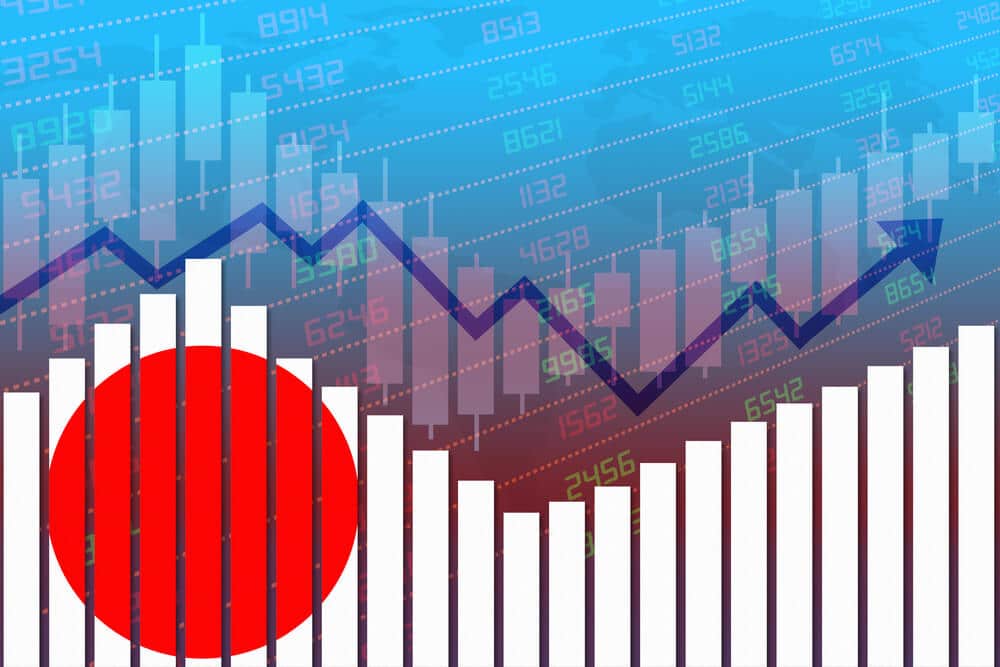
Elsewhere, Treasury yields have seen an uptick at the start of the week, following a weekend where the Federal Reserve entered a blackout period ahead of its Federal Open Market Committee (FOMC) meeting, scheduled to begin on October 31st. The benchmark 10-year note reached its highest level since 2007, briefly surpassing the 5.0% threshold on Friday and remaining close to that level heading into Monday’s trading session. Before the information blackout, Cleveland Federal Reserve President Loretta Mester contributed to the growing consensus among board members hinting at a potential peak in the policy rate, stating, “We are likely near or at a holding point on the funds rate.”
Across the Asia-Pacific (APAC) region, equity indices have mirrored Wall Street’s performance from Friday, with major markets seeing declines. India’s stock exchanges have fared somewhat better, trading almost flat for the day.
Spot gold has experienced a decline at the beginning of the week, failing to breach the $2,000 mark on Friday. Crude oil prices have also retraced some of their recent gains as energy markets contemplate the geopolitical situation in the Middle East.
Looking ahead to this week, the Bank of Canada (BoC) and the European Central Bank (ECB) are set to make monetary policy decisions on Tuesday and Thursday, respectively. Additionally, Australia will release crucial 3Q CPI data on Wednesday, followed by US GDP data on Thursday.
USDCHF Analysis:
USDCHF is moving in the Descending channel and the market has fallen from the lower high area of the channel
September saw a remarkable boost in the trade balance, soaring to 6,316 million, a substantial leap from the previous month’s 3,814 million. This surge was primarily powered by a substantial upswing in exports, which surged to 24,795 million in September, up from 20,932 million. Concurrently, imports also experienced an uptick, registering 18,480 million, compared to the prior reading of 17,118 million. These noteworthy shifts have spurred steady growth in the Swiss Franc, with the currency maintaining its upward trajectory following the release of these figures.
During the early European session on Monday, the USD/CHF pair maintained a position near 0.8935. There’s been a resurgence in demand for the US Dollar (USD), providing some support to the pair. Nevertheless, lingering geopolitical tensions are casting a shadow over the market and could potentially limit the Greenback’s upward momentum. Concerns have arisen that the conflict in Israel may escalate into a larger-scale Middle East conflict, a situation that prompted Washington to issue warnings about significant risks to US interests in the region. Adding to the concerns, Chinese state media reported on Monday that the situation in Gaza is deemed “very serious,” with the likelihood of a large-scale ground conflict increasing and the overall outlook growing worrisome as armed conflicts spread along neighboring borders. Consequently, the escalating geopolitical tensions in the Middle East could bolster safe-haven assets like the Swiss Franc and act as a counterforce for the USD/CHF pair.

Looking back at last week, the Swiss trade surplus for September exceeded expectations. The Trade Balance figure came in at 6,316 million, surpassing the previous month’s 3,814 million and also surpassing the market consensus of 3,770 million. Additionally, exports witnessed a notable surge in September, reaching 24,795 million month-on-month, up from the previous reading of 20,932 million. Import figures also showed an increase, totaling 18,480 million month-on-month compared to the previous reading of 17,118 million.
On the other side of the Atlantic, various Federal Reserve officials made statements regarding monetary policy. Atlanta Fed President Raphael Bostic stated on Friday that he believes the US central bank is unlikely to cut interest rates before the middle of next year. Fed Philadelphia President Patrick Harker reiterated his preference for keeping interest rates unchanged. Meanwhile, Fed Cleveland President Loretta Mester mentioned that the US central bank is “at or near the peak of the rate hike cycle.” However, the data set to be released this week could influence the central bank’s outlook. Stronger-than-expected data might strengthen the US Dollar, potentially limiting the downside of the USD/CHF pair.
In terms of economic data, the US budget deficit for September amounted to $170 billion, according to the Treasury Department’s report on Friday. The overall 2023 budget deficit reached $1.695 trillion, which is 23% larger than the previous year and exceeds all pre-COVID deficits. Looking ahead, market participants will closely monitor the release of the US S&P Global PMI data on Tuesday. Additionally, the first reading of Q3 US Gross Domestic Product (GDP) growth is scheduled for Thursday, and the Core Personal Consumption Expenditures (PCE) data will be released on Friday. On the Swiss front, the Swiss ZEW Survey for October is expected to be published on Wednesday. These data points could provide clarity regarding the future direction of the USD/CHF pair.
USDCAD Analysis:
USDCAD is moving in the Descending channel and the market has reached the lower high area of the channel
There is an 84.1% probability that the Bank of Canada will decide to hold interest rates steady in this week’s meeting. One contributing factor to this likelihood is the recent retail sales data for September, which showed a decrease of -0.10%. This decline follows a previous decrease of -0.30% that was recorded in August, further reinforcing the case for a pause in rate adjustments.
In September, Canadian Retail Sales exhibited a stagnant trend, while the previous August reading was revised from -0.3% to -0.1%. It’s important to note that the August retail figures should be viewed with caution due to the port strikes in British Columbia. These strikes disrupted supply chain logistics and resulted in 12% of survey respondents reporting reduced business activity.
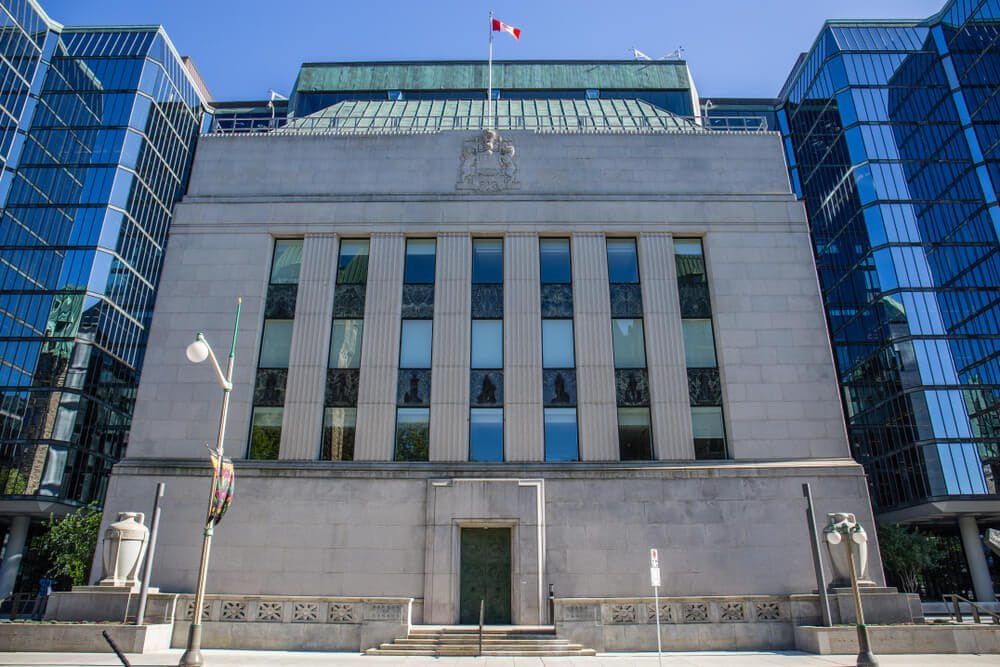
One positive development for the Bank of Canada (BoC) is the slowdown in Canadian inflation during September, despite rising fuel prices. Both the Core and Headline inflation rates came in below expectations. This news is particularly relevant in light of the recent pessimistic remarks from Deputy Governor Vincent. Given the inflation data and the stagnation in Retail Sales, it is increasingly likely that the BoC will opt for a pause in its upcoming meeting scheduled for next week.
Currently, market participants are pricing in an 84.1% probability of interest rates remaining unchanged, with only a 15.9% chance of a 25 basis point hike.
EURUSD Analysis:
EURUSD is moving in the Descending channel and the market has reached the lower high area of the channel
The ECB is inclined to take a break from raising interest rates in the upcoming meeting. It is estimated that inflation will reach the 2% target by the year 2026. Additionally, the European Commission has announced an extension of the price cap for gasoline prices until the end of this year, citing the ongoing Middle East crisis. This amendment has been in place since February and has not had any adverse effects thus far.
In the upcoming week, the focus will be on the European Central Bank’s (ECB) monetary policy decision, especially as the Federal Reserve enters its blackout period in preparation for its November 1 announcement. The prevailing expectation is that the ECB will maintain its current borrowing costs, having already implemented 450 basis points of rate hikes over the course of the past 10 meetings. This anticipated move aligns with the ECB’s willingness to tap the brakes when necessary. Additionally, the recent increase in bond yields within the region has further supported the effectiveness of the bank’s tightening cycle, reducing the immediate need for further actions.

While the Eurozone’s growth prospects might suggest a more dovish monetary policy stance, the inflation landscape presents a different scenario. With Brent oil prices experiencing a bullish surge and remaining significantly above the ECB’s September staff projections, which assumed an average price of $82.00 per barrel, Consumer Price Index (CPI) inflation may not align with the 2.0% target until 2026, a year later than the bank’s initial projection. This situation may necessitate a more hawkish stance and a steadfast commitment to continue the battle against inflation without premature easing.
Moreover, the European Union (EU) is contemplating an extension of the emergency gas price cap that was implemented in February. This decision comes amid concerns about the Middle East crisis and potential disruptions to a Baltic pipeline, which could lead to rising prices during the upcoming winter. The European Commission has reported that there have been “no indications of negative effects” since the policy was put into place, and natural gas prices are currently approximately 90% lower than they were last year.
GBPUSD Analysis:
GBPUSD is moving in the Descending channel and the market has reached the lower high area of the channel
Inflation continues to remain elevated in the UK, and it is widely anticipated that the Bank of England will need to implement a rate hike during its upcoming meeting on November 7. This week, the focus will be on important economic indicators such as employment change and the unemployment rate.
In the week ahead for the UK, the data calendar appears relatively subdued, with a focus on the delayed release of unemployment figures and the introduction of flash services and manufacturing PMIs scheduled for Tuesday, which will be of interest to traders. Recent data emanating from the UK has presented a mixed picture, with some indicators falling below expectations.
GBPCHF Analysis
GBPCHF is moving in the Descending channel and the market has reached the lower high area of the channel
The most recent inflation data, in particular, failed to meet forecasts. Despite official suggestions that inflationary pressures will ease as the year progresses, the reality is that UK inflation remains persistently high. Concurrently, the UK’s economic growth continues to display lackluster performance at best. This scenario sets the stage for another challenging decision-making process for Governor Andrew Bailey and the Monetary Policy Committee (MPC) at the forthcoming Bank of England (BoE) meeting scheduled for November 2nd. The prevailing uncertainty in this environment places the British Pound at risk of potential depreciation.

Additionally, traders will be keeping a vigilant eye on their screens come Thursday, as the European Central Bank (ECB) is slated to announce its latest policy decision. Market consensus leans towards the expectation that the ECB will maintain its existing policy measures without any adjustments.
GBPNZD Analysis:
GBPNZD is moving in an Ascending channel and the market has rebounded from the higher low area of the channel
In September, New Zealand’s trade balance recorded a deficit of -$15.33 billion, a slight improvement from the -$15.52 billion reported in August. The New Zealand Dollar (NZD) has been influenced by the slowdown in the Chinese economy and the implementation of peak interest rates.
The Trade Balance figures released by New Zealand on Thursday failed to instill confidence in the NZD, as the broader market focus remains centered on Federal Reserve (Fed) discussions. New Zealand’s Trade Balance exhibited minimal changes in the import-export balance for the small Antipodean nation. The annualized Trade Balance for September registered at $-15.33 billion, a modest improvement from the August figure of $-15.52 billion. Exports from New Zealand dipped to $4.87 billion, with the previous figure receiving a slight downward revision from $4.99 billion to $4.97 billion. Similarly, New Zealand’s Imports experienced a decline, with the September reading standing at $7.2 billion compared to August’s $7.24 billion (revised from $7.28 billion).
New Zealand is gearing up for an extended weekend, with Kiwi markets closed on Monday for the Labour Day holiday. The next significant event for the NZD/USD pair will be Tuesday’s release of the US Preliminary Purchasing Manager Index (PMI) data for September. Market expectations point to a minor decline in both the manufacturing and services components of the PMI.
AUDUSD Analysis:
AUDUSD is moving in the Descending triangle pattern and the market has reached the support area of the pattern
RBA Governor Bullock has reiterated that there will be no interest rate hike until December 2023. Inflation has been consistently slowing down as anticipated each month. This week, on Thursday, the release of the Q3 CPI figures is scheduled. The RBA’s decision in the next meeting will depend on the outcome of this reading. If the data is favorable, the RBA is likely to maintain the current rate, but if it turns out to be negative, the central bank may consider a reversal of its stance.
In recent times, the Australian Dollar has been significantly influenced by the fluctuations in the US Dollar. However, there are indications that this trend may undergo a transformation if the Reserve Bank of Australia (RBA) chooses to deviate from the course followed by other central banks. Over the past week and a bit, there has been a notable shift in the RBA’s tone and messaging, particularly after the decision to maintain interest rates at 4.10% during the October meeting.
The RBA’s accompanying statement left the possibility of a future rate hike on the table, maintaining a consistent tone with previous communications. This signaled to the market that further tightening measures could be on the horizon, a reasonable inference given that the RBA had kept rates unchanged for four consecutive meetings. The shift in tone commenced with comments from RBA Assistant Governor Chris Kent on October 11th, where he suggested that additional tightening might be necessary to combat persistently high inflation.
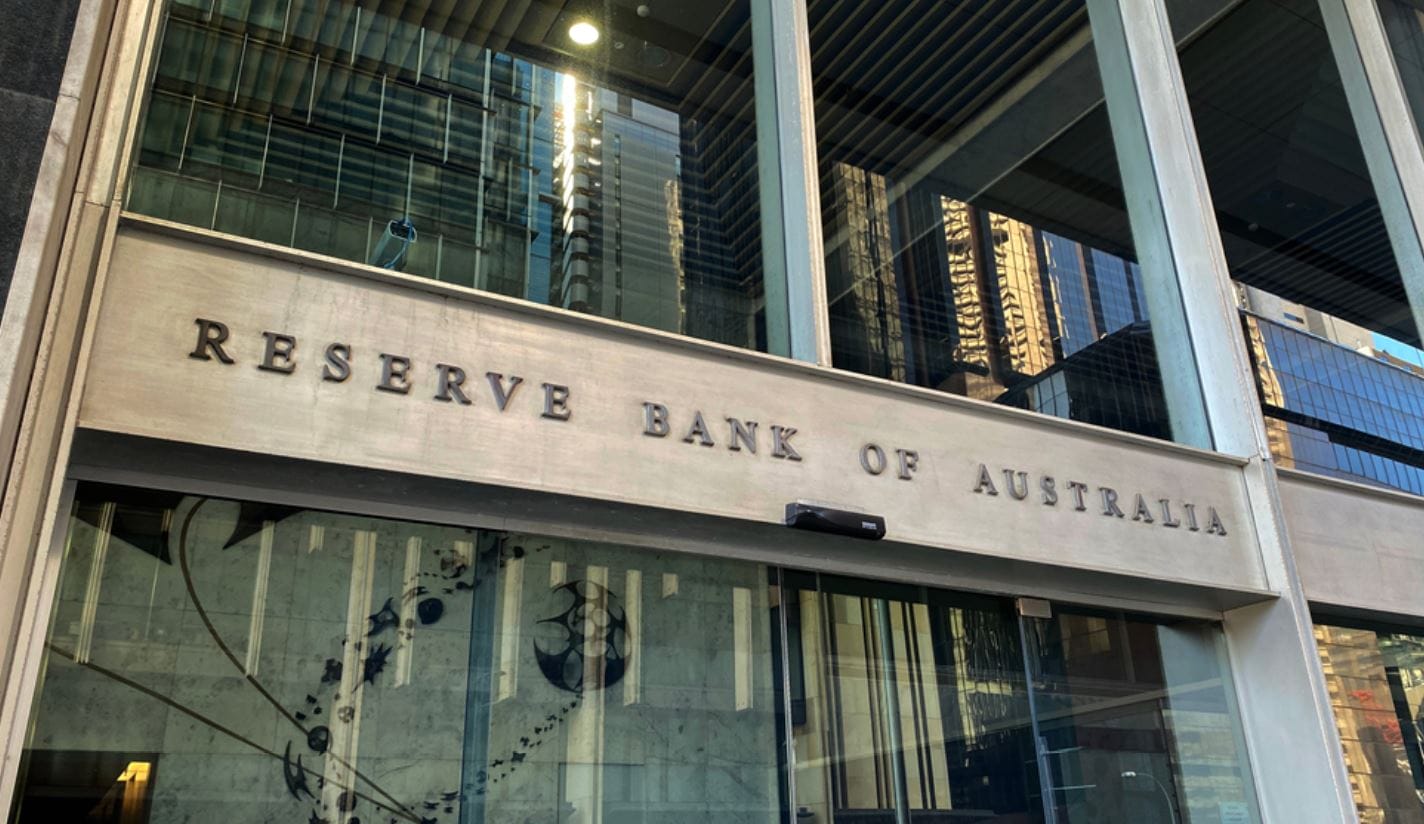
The release of the RBA meeting minutes the following Tuesday stood out, as they hinted at the bank being closer to a rate hike than what was initially conveyed in the policy statement. Specifically, the minutes revealed the RBA’s low tolerance for inflation returning to its target more slowly than anticipated. The decision on whether to raise interest rates was stated to be contingent on incoming data and the evolving economic outlook.
RBA Governor Michele Bullock further contributed to this evolving narrative by underscoring the challenges posed by consecutive external events driving inflation. She emphasized that persistent inflation, even when driven by supply shocks, can lead to changes in people’s inflation expectations, thereby reinforcing inflationary pressures.
Currently, the market assigns only a 45% probability of a rate hike by year-end. If the RBA refrains from raising rates in either the November or December meetings, the next opportunity will not arise until February. Consequently, all eyes will be on the release of the quarterly CPI data scheduled for this Wednesday, followed by Ms. Bullock’s speech the following day. Unlike her predecessor, she may not be constrained by commentary discouraging aggressive inflation-fighting measures. Notably, the RBA has raised rates by 400 basis points since the pandemic lows, while the Federal Reserve has implemented a 525 basis point hike. This suggests that there is room for the RBA to catch up. If a rate hike materializes at the November 7th meeting, it could potentially rejuvenate the Australian Dollar.
Don’t trade all the time, trade forex only at the confirmed trade setups.
Get more confirmed trade setups here: forexgdp.com/buy/

